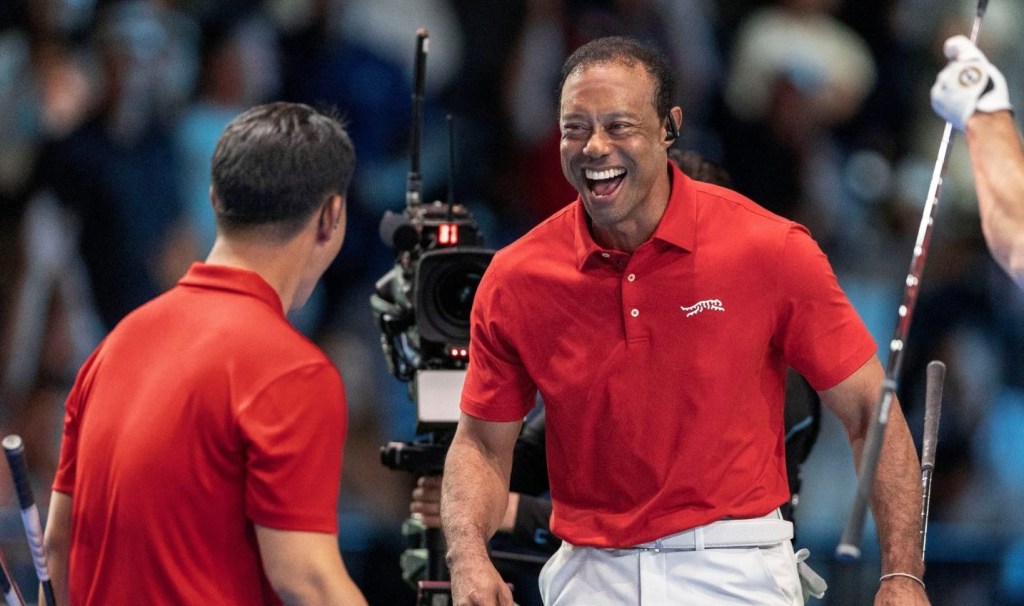The Pac-12 began 2024 with an uncertain future, and ended the year by having to watch two of its former members earn coveted first-round byes in the expanded College Football Playoff.
The league was about to lose all but two members—Oregon State and Washington State—after a vicious round of conference realignment picked the Pac-12 apart in 2022 and 2023. It had an incompetent (and largely absent) commissioner in George Kliavkoff. It had no television deal and planned to lay off most of its league employees.
But by the time the league rings in 2025, it will have succeeded in an unprecedented resurrection. Led by a new commissioner, Teresa Gould (who had spent years at the conference office and working for Pac-12 programs), the Pac-12 was able to create a new blueprint to run the conference, sign a football media deal, and eventually ink agreements to add seven new members in 2026.
The league still has a ways to go—it needs a media deal, another member, and litigation to settle. And it won’t have power conference status.
Here’s how, after a roller coaster of a year, the 108-year-old Pac-12 has rebuilt—and will live to see the next era of college sports.
Before courting new schools, Oregon State and Washington State set out to rebuild their conference’s infrastructure.
They had plenty of resources: In March, Oregon State and Washington State finalized a divorce agreement with Pac-12 departing members that gave them not only the rights to the Pac-12 intellectual property, but also a war chest of more than $100 million between exit fees and other assets. The schools hired Gould, agreed to an affiliate membership with the West Coast Conference for Olympic sports, and inked a football scheduling partnership with the Mountain West for the 2024–2025 season—guaranteeing WSU and OSU would have a full slate of games against local FBS programs.

In the spring, the league reimagined its Pac-12 Networks assets. The league put the network off the air and launched Pac-12 Enterprises in its place: a company that would produce Pac-12 sporting events, as well as providing for-hire services for other local college and pro sports events—including offering up their new, state-of-the-art Pac-12 Networks production studio. The league then signed a modest media-rights deal for home football games with Fox Sports and The CW.
By the time football season kicked off in August, OSU and WSU were set up for the 2024 season. But their long-term future still hung in the balance.
In early September, the Pac-12 and Mountain West said they had agreed not to extend their scheduling partnership from 2025–2026. The news came just as their original partnership was beginning.
The decision was due to a financial dispute, Front Office Sports previously reported: The Pac-12 was paying $14 million in fees to participate and unsuccessfully tried to negotiate. The question of where the Pac-12 would find future opponents didn’t last long. On the morning of Sept. 12, the league announced a blockbuster realignment move: It would welcome four Mountain West schools—Boise State, Fresno State, San Diego State, and Colorado State—to the league starting in 2026.
The leagues, which previously appeared to be in the middle of a happy courtship—and considering a formal marriage—had become bitter enemies in the matter of a week.
The Mountain West scrambled to try to put together a contract to keep its remaining members together—an agreement that every school but Utah State, which also bolted for the Pac-12, signed. The Mountain West has since granted Hawai‘i a full membership, and also added UTEP, Grand Canyon, and most recently UC Davis. The Pac-12 beefed up its basketball slate with Gonzaga.

The Pac-12 still had a problem on its hands, however. The football scheduling partnership included a clause saying it was liable to pay the Mountain West tens of millions of dollars for poaching Mountain West schools. According to a copy of the contract that FOS obtained, the Pac-12 owed $55 million.
Instead of paying, the league promptly filed a lawsuit against the Mountain West in an attempt to invalidate the contract. A few months later, Colorado State, Utah State, and Boise State filed a lawsuit of their own trying to get out of having to pay Mountain West exit fees estimated to start at around $19 million per school.
As it stands, the Pac-12 will live for one more year as a two-member league, and then transition into a league with eight full members, seven of which play FBS football. (On Dec. 11, the conference filed applications for “Pac-9,” “Pac-10,” “Pac-11,” “Pac-13,” and “Pac-14” with the United States Patent and Trademark Office, perhaps as a contingency for expanding beyond eight members.)
But the league still has several major unresolved issues.
It’s currently in the midst of exploring a long-term media-rights deal, which it hopes to sign before adding any other members—a task it has enlisted media-rights consulting firm Octagon to help with. A media-rights deal is the crux of what keeps a conference together, providing financial stability and, sometimes, an additional contract called a Grant of Rights that requires schools to stick together for a certain number of years.
The league also has more work to do to maintain its existing status in the college football landscape. The Pac-12 was already stripped of its “autonomy” voting status in the NCAA governing structure, and it is no longer considered a power conference as it relates to College Football Playoff revenue distribution. But if it wants to remain an FBS conference at all, it must find one more full FBS-playing member by 2026. NCAA rules require FBS leagues to have at least eight full members.
And, of course, the league will have to resolve its legal dispute with the Mountain West, so the two can sever ties for good.
Despite the long to-do list, however, the Pac-12 has a more stable future now than it has at any point in the past year and a half. The comeback is nothing short of remarkable.

















